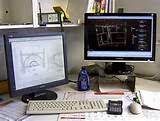.jpg)
in the previous book, you studied different types OS, their purpose and task. this chapter deals with only one type of operating system, i.e. windows XP. here, you will learn about basic OS functions, and how to accomplish them. you will learn how to the same task in many different ways. remember, there are number of ways to perform to task. each way has its own benefit.
OPEN AND CLOSE FILE:
OPEN FILE.
following are the different techniques to open a file:
1. double clicking the file icon.
2. pressing the enter key when cursor is on file-name.
3. right clicking the file, and clicking on open.
4. drag and drop a file onto corresponding software or application window.
CLOSE FILE:
.jpg) following are the different techniques to close a file:
following are the different techniques to close a file:1. press the shortcut key Alt+f4 (press the ALT key and then f4 key).
2. clicking by mouse the 'X' on top right of open window.
3. right clicking corresponding application on the task bar, and clicking close.
4. clicking on exit form the file menu(in most application).
scientists are working to make more interactive ssoftware these software can open and close file by voice commands, spoken into computer microphones.
NAME AND RENAME FILE AND FOLDERS:
remember, file is a collection of letters, numbers ans special characters. example of file are numerous:MS word file, MS excel file, game file, OS file and so on. a collection of file is known as a folder.in windows XP, a folder is usually represented. file and folders can be renamed at will. windows XP reserves some characters for its own use.it does not allow foles and folders to be renamed with them. Example are:
*"/\:?< >|
furthermore, almost all computer files and folders may be renamed. windows XP reserves some foldres for its own use, and does not allow them to be renamed.
here's how to rename files / folders:
1. right click a file's name, then click on rename.
2. press f2 on the keyboard when cursor is on a file name.
 09:52
09:52
.jpg)
.jpg)
.jpg)
.jpg)
.jpg)
.jpg)
.jpg)

.jpg)
.jpg)
.jpg)
.jpg)
.jpg)
.jpg)

.jpg)
.jpg)
.jpg)
.jpg)
.jpg)
.jpg)
.jpg)
.jpg)
.jpg)
.jpg)
.jpg)

.jpg)
.jpg)
.jpg)
.jpg)


.jpg)





.jpg)


